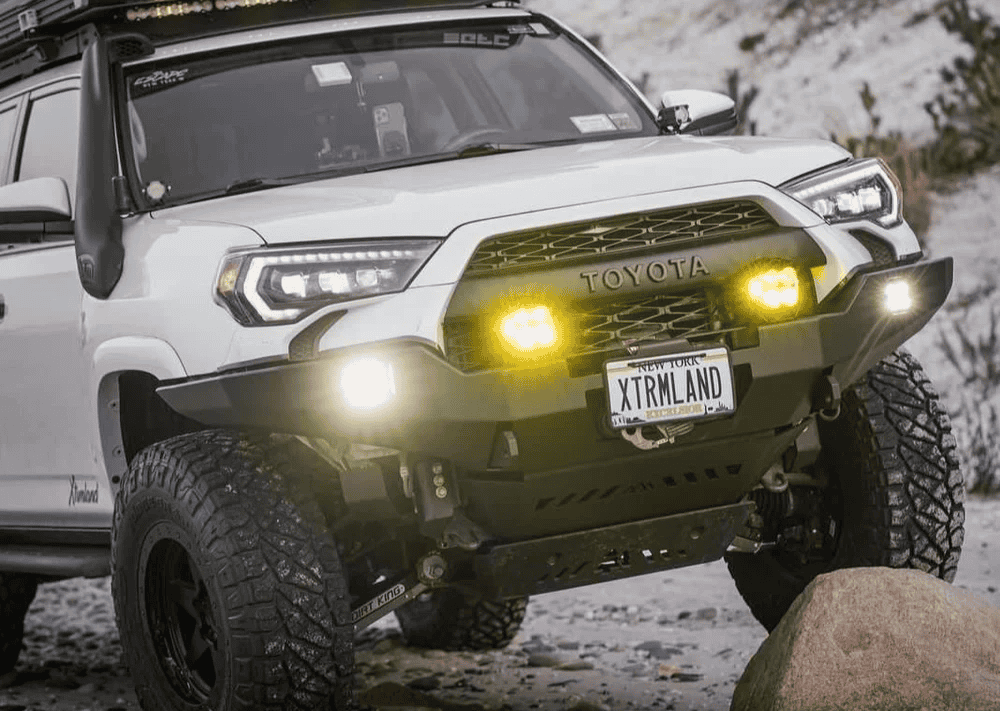Overland Vehicles

Trip length, climate, crew size, and cooking style drive capacity needs. A common baseline is three to five liters per person per day for drinking and cooking, with more for hot climates or showers. Add a margin for trail delays and water heavy meals. Then decide how that volume lives in the vehicle.
Tank materials matter. Food grade HDPE is light, durable, and easy to shape. Stainless is tough and heat tolerant but heavier. Flexible bladders can squeeze into odd cavities, yet they need careful abrasion protection. Upright interior tanks simplify plumbing and freeze control, while underbody tanks free cabin space and lower the center of gravity.
Venting, baffling, and access are often overlooked. A vent prevents vacuum lock during filling and allows smooth flow while driving. Internal baffles calm slosh on rough tracks. A large service port lets you scrub the interior and inspect fittings.
Match material to terrain and maintenance habits. HDPE resists most impacts and chemicals, which suits dusty deserts and corrugated tracks. Stainless can tolerate hot water better and delivers a clean interior surface for long term use. If you run a bladder, add a protective cradle and smooth all contact edges to prevent wear from vibration.
Bigger tanks extend range but impact payload and handling. Disperse weight low and near the axle line to preserve ride quality. Many travelers carry a primary tank for daily use and a smaller reserve for emergencies. That two tier plan avoids running completely dry if you misjudge a refill point.
Design for easy fills from jugs, taps, or streams. A dedicated fill with a strainer prevents debris entry. Plan a drain low point for full system flushes. Set a schedule for sanitizing with diluted unscented bleach or specialized treatments, then rinse until the water is neutral in smell and taste.
Reliable plumbing starts with simple routing and rugged components. PEX with compression style fittings performs well under vibration and temperature swings. Reinforced vinyl can work for flexible runs, but protect it from abrasion. Secure every run with cushioned clamps to prevent chafe and noise.
A typical overland water system pairs a 12 volt diaphragm pump with an accumulator to smooth pulsation. Place a sediment prefilter before the pump to protect the internals. At the tap, add a carbon block for taste and chemical reduction. If you draw from surface water, a dual stage system with sediment and carbon plus UV can give extra assurance.
Freeze protection is critical for shoulder season and mountain travel. Keep lines inside the thermal envelope when possible. For underbody tanks, use insulation, heat pads with thermostats, and drain down options for deep cold. Add a bypass that lets you use unheated water when a minor freeze would risk damage.
Choose a quiet pump rated for your expected flow at camp. An external filter housing with clear bowls makes cartridge checks simple. Mount filters vertically to purge air quickly. For below zero nights, isolate the tank and pump with shutoffs, then drain the external sections. A small loop of heat trace on exposed valves can prevent freeze induced cracks.
A fill cap that locks, a vent with a splash guard, and a proper check valve protect your supply during rough water crossings. Use food grade hose for gravity fills, and keep a separate hose for non potable tasks. Label valves so you can switch modes without guesswork at dusk.
Soft mount the pump on rubber feet and use flexible sections on either side to reduce hum. Group the pump, filters, and valves on a service panel that is easy to reach. Quick disconnects at the pump and fixtures let you swap parts without draining the whole system.
Here are trail proven 4WD water storage ideas that keep weight controlled and access simple:
Roof storage is tempting but raises the center of gravity and strains mounts on rough tracks. If you must, limit volume and position forward of the rear axle line. Always secure containers with rated hardware and backup straps. Inspect mounts after washboard sections and retorque fasteners.
Use metal cradles and load rated bolts that tie into structural members, not thin sheet. Add rubber isolators to absorb shock. Keep heavy water mass between the axles, low in the chassis, and symmetrical left to right. Test your setup on a short shakedown route before a big loop.
A low flow sprayer at the rear door covers dishes and quick showers without wasting supply. Separate a small grey container for leave no trace dishwater. Store a dedicated handwash pump bottle at the tailgate to reduce cross contamination while handling food.
If you want a clean, integrated install that matches your rig’s suspension, payload, and travel goals, schedule a custom build. Explore how we set up tanks, plumbing, and filtration on our overland rigs. For tailored layouts and secure mounting, see our custom overland upfit options, then learn more about our process at why choose OZK Customs. We design and install systems in Fayetteville so you can pick up and head straight for the trail.
At OZK Customs, the goal is simple. Make water planning invisible while you drive and effortless at camp. With the right capacity, smart filtration, and solid mounting, your overland water storage becomes a quiet backbone for every mile.
Ready to trust your water on every mile. OZK Customs designs and installs integrated overland water systems with secure tanks, smart plumbing, and proven filtration. Book a consult to get a clean, quiet setup that fits your rig and travel style, then pick up your build in Fayetteville and drive home adventure ready.
ADDRESS:
6159 E Huntsville Rd, Fayetteville, AR 72701
PHONE:
(479) 326-9200
EMAIL:
info@ozkvans.com